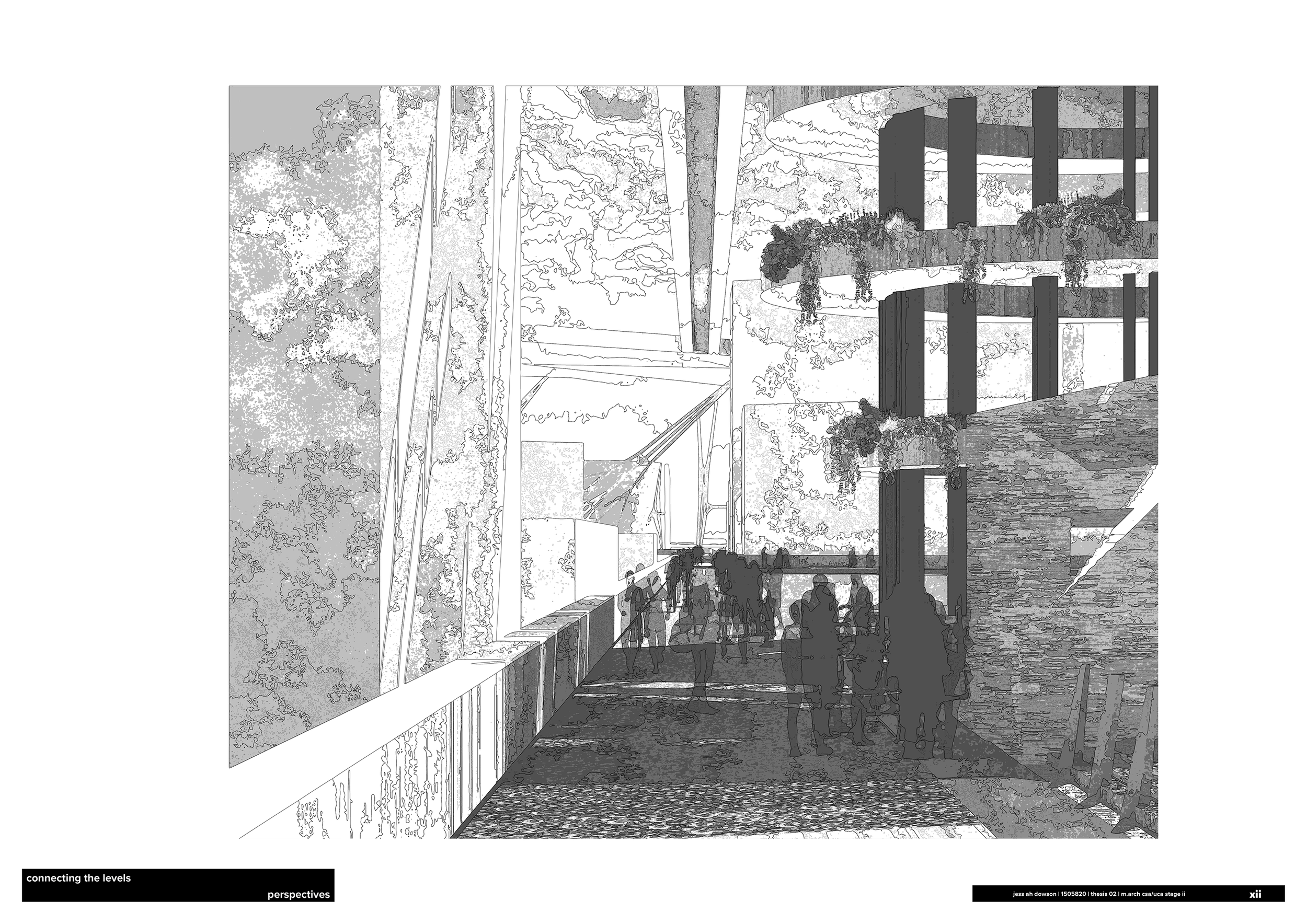M.Arch Project 04 - Interim Crit
On Friday we had our interim crit for our final project. It may sound odd to say, but its all feeling very real at this point, that we only have 7 weeks until our final review, and we submit our portfolio the following week. There is still a lot of work to be done, but the guidance I received on Friday was incredibly helpful and helped me focus on what next steps need to be taken. Also, apologies if anyone at the pub last night was taken aback by my sudden silent departure - once my fatigue hits a certain level, my mood shifts like a circuit breaker and I just need to get the hell out.
Next steps include: showing an evolution over time of the densification and development of the area, additional cityscape detailing to really sell the visuals and interplay between the chosen infrastructural development and everyday routines of its inhabitants, along further and rapid evolution in both architectural resolution and programming of the bridge elements - perhaps revisiting the ‘nodal usage’ from the first semester’s work. Fortunately none of the recommendations came as a shock, and I’d already been mentally mapping out certain elements beforehand.
I’ve also been playing with a new artistic representation with the perspectives, which went down particularly well. In essence, it was a combination of adding additional textures to a basic VRay render in Photoshop, desaturating the image, then using multiple layers of Illustrator’s image trace function, set at various degrees of B/W, plus a greyscale layer in a couple of instances. I would then invert about half of the B/W layers to show strokes only, which is how I ended up with the resultant effect. Whether this technique holds up with the greater level of architectural detailing required over the next few weeks will remain to be seen, but I am hopeful.
One other aspect of the research and development I want to touch on is the development of the bridge structure itself - by attempting to utilise and implement a method based in engineering called three-dimensional graphic statics, which itself is based upon two dimensional graphic statics as development by James Clark Maxwell, amongst others. This particular method of work is being pioneered by groups at the University of Pennsylvania + ETH Zurich (Polyhedral Structures Lab + Block Research Group respectively), and I am well aware that I am only scratching the surface of what is possible with this technique. I am also under no illusions that I am approaching this from a purely architectural level, with only limited mathematical and engineering understanding. Still, the research into this has been fascinating, if daunting, and I’ve also uploaded a select number of pages from the technology dossier we’re developing as part of an additional study module, which can be seen above.

















